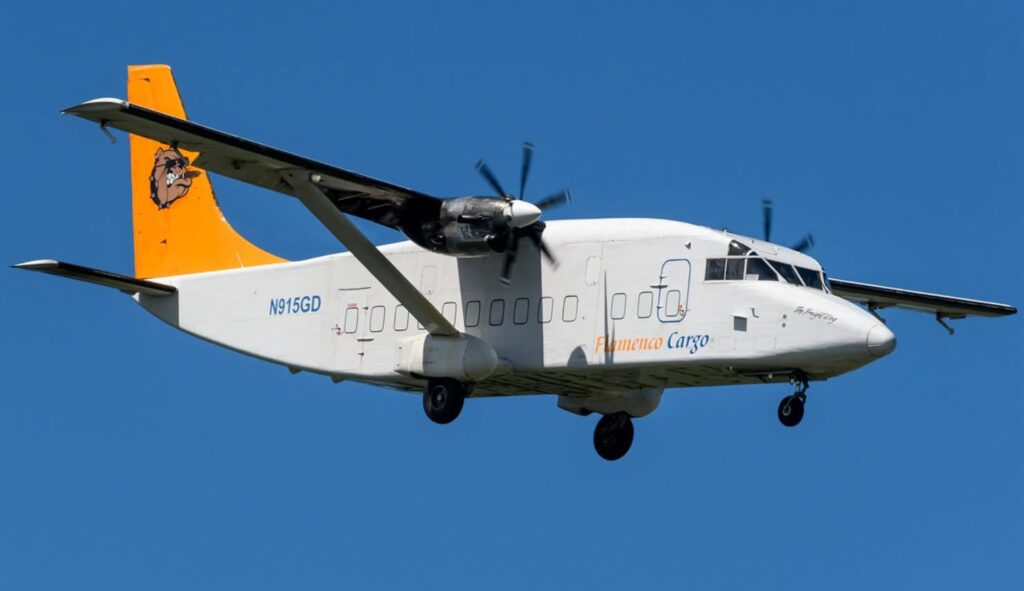
N915GD Short Bros SD3-60 Terrance B. Lettsome International Airport British Virgin Islands TUPJ 06 NOV 2024
2 POB – No Injuries
Synopsis:
On arrival at Terrance B Lettsome International Airport (TUPJ) in the British Virgin Islands, N915GD was likely affected by nearby thunderstorm activity, reportedly experiencing a downdraught on short finals. Despite the commander applying more power to “arrest the descent”, the aircraft initially touched down on the lip of Runway 07 (Rwy 07), approximately 150 m short of the threshold. It then bounced and touched down again close to the threshold. The airfield operations team later found a frangible runway light had been damaged by the aircraft when it undershot the runway.
While he knew the aircraft initially touched down in the undershoot, the commander was unaware that it had struck the light and did not file an occurrence report. The aircraft returned to its home base approximately one hour later.
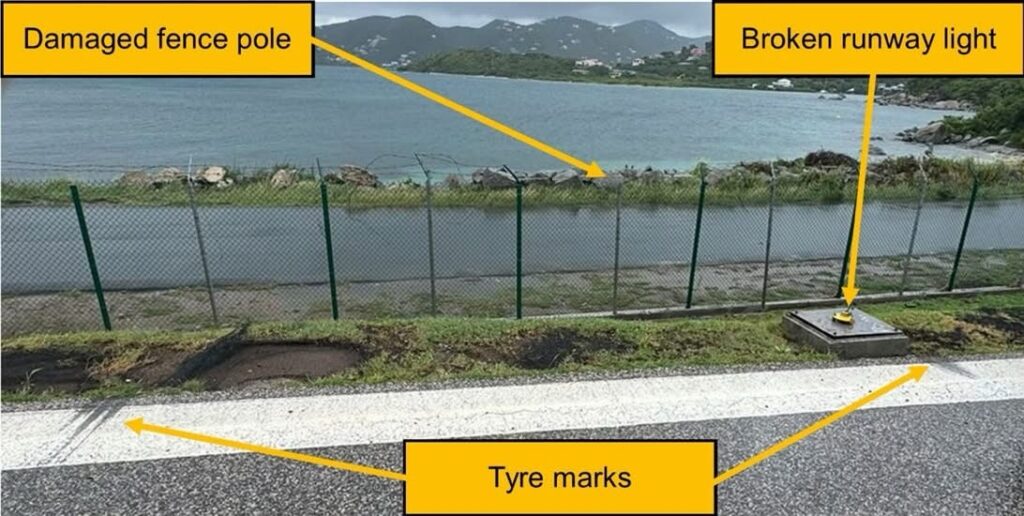
An initial incorrect assessment of the severity of this incident, contributed to a delay in this serious incident being notified to the AAIB. This delay, combined with a paucity of information about the circumstances and handling of the event, made it difficult for the investigation to gain a detailed understanding of what had happened. It is unclear whether the undershoot resulted from the commander attempting to rescue an unstable approach or whether his application of power was the initiation of an unsuccessful go-around.
History of the flight:
During an airfield inspection at TUPJ, which began at 1900 hrs Z on 6 November, it was found that a frangible light at the western edge of the Rwy 07 undershoot was missing. Tyre marks were also discovered on the extreme end of the runway. Based on the nature of the marks, their orientation and location, as well as the track between them, it was determined they were made by an aircraft rather than a ground vehicle. The airfield boundary fence in the Rwy 07 undershoot had also sustained damage. The barbed wire support arm on one fence pole was missing and the wire had been severed in that location.
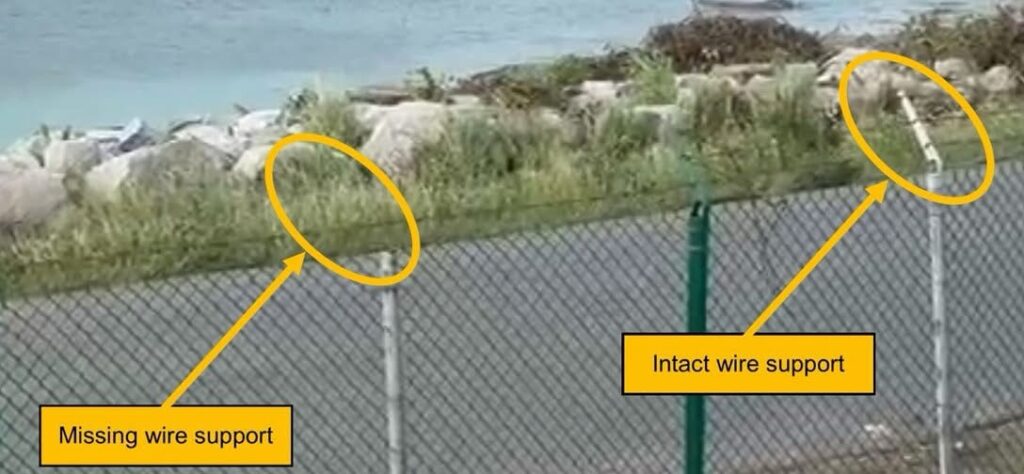
To determine how the damage might have occurred, the airfield authorities reviewed CCTV footage from 6 November. They found that when N915GD made its approach to Rwy 07 at 1854 hrs Z it initially touched down in the undershoot at the edge of the runway pavement, bounced once and then landed off its second touchdown.
The commander was aware the aircraft had touched down short of the threshold but did not realise it had struck the runway light in the process. No damage was observed during the turnaround and the aircraft then flew back to its base at San Juan, Puerto Rico.
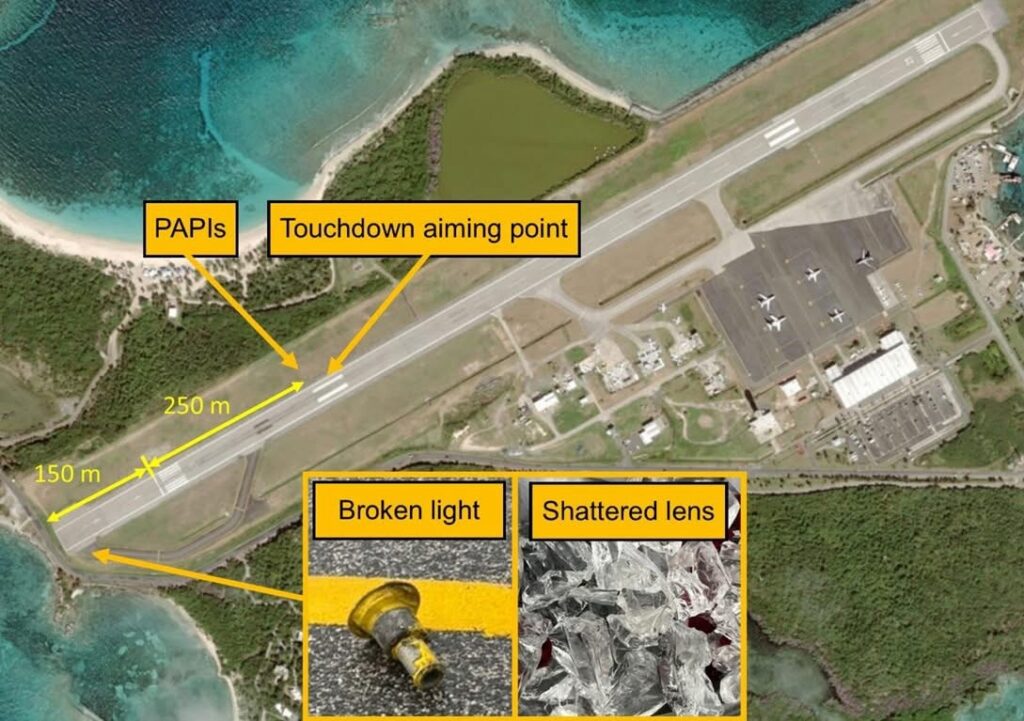
Safety reporting:
With damage to airfield infrastructure having been found, the airfield duty manager submitted a Mandatory Occurrence Report (MOR) to Air Safety Support International (ASSI) on 9 November 2024. In the MOR, the event type was recorded as ‘Incident.’ Following a review of the report, ASSI reclassified the event as a Serious Incident and notified the AAIB on 6 January 2025.
Unaware that the aircraft had struck any obstacles on the approach, the flight crew did not submit a safety report about the landing but provided the following brief statement on 8 November 2024 in response to the TUPJ airfield authorities’ enquiries.
‘On November 6 the weather was marginal with rain on all quadrants, upon approaching runway 7 on short final started to experience wind gusts and probably a downdraft [sic], seemed close to a low-level wind shear. Applied power to arrest the descent. I landed slightly short of the numbers. I was totally unaware that I struck [anything].’
Although they were requested from the commander, further details of the occurrence, which could have provided greater insight into the content and context of their 8 November statement, were not provided to the AAIB.
ICAO Annex 13 (Aircraft Accident and Incident Investigation) Attachment C lists typical examples of incidents that are likely to be classified as serious. This list includes:
‘Take-off or landing incidents. Incidents such as under-shooting, overrunning or running off the side of runways.’
The operator did not instigate an internal safety review for this serious incident.

Personnel:
The commander did not supply the investigation with details of their flight licence, medical status, flying experience or recency.
Meteorology:
The reports submitted to the AAIB did not contain meteorological information, but the UK Met Office generated a limited aftercast for the time of the serious incident. The report found that:
The weather conditions on the day were characterised by light east to north easterly winds with scattered cloud.
There was no indication, in the TAF or FIR Forecast of any low-level turbulence, except for that which might be expected in the vicinity of convective clouds such as cumulonimbus (CB).
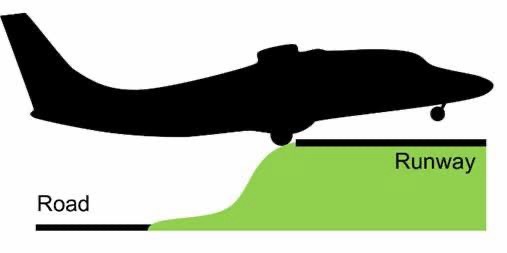
The TUPJ TAF included a risk of thunderstorms from 1800 hrs UTC, with an associated forecast reduction in visibility and cloud bases.
The reported intensity of the rainfall at the airfield along with the number of lightning strikes recorded on the weather radar imagery at Figure 5 indicated an active CB cell was over or close to the territory at the time of the serious incident.
There was no indication of any significant wind shear in association with the thunderstorms, but the Met Office did not have access to the full record of wind speed or direction.
Weather radar image at 1900 hrs Z on 6 November 2024 (crosses indicate lightning strikes)
Aircraft examination:
The flight crew did not notice any aircraft damage on the turnaround at TUPJ. During maintenance action after the return flight ‘marks of contact’ were found on the left mainwheel tyre which required it to be removed and replaced. The operator did not identify any other airframe damage.
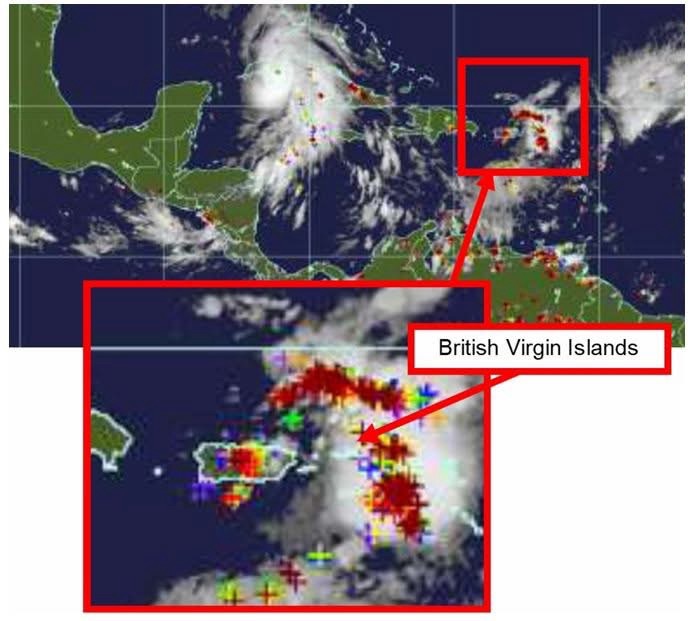
Airfield description:
TUPJ has a single runway with displaced thresholds at either end. The paved undershoot for Rwy 07 is approximately 150 m long, after which the ground falls away across a public road and rocky shoreline to the sea. The distance between the paved surface and the sea is approximately 25 m and the reported touchdown elevation is 14 ft (Figure 6). As it passes through the undershoot, the top of the airfield perimeter fence is below the level of the paved runway surface.
The Rwy 07 PAPIs are set for a 3.5° final approach.
The runway chart for TUPJ alerts pilots to occasional windshear on the approach to Rwy 07 when the winds are from the south and south-east.
Analysis:
While the TUPJ airfield chart warns of possible windshear with winds from the south and south-east, the winds on the day were generally light east/north easterlies. The aftercast indicated the weather conditions reported by the pilot were likely to have been associated with an active CB cell in the vicinity of the airfield. The Met Office did not have access to the full record of wind speed or direction; however, turbulence and windshear could be expected in association with CB activity.
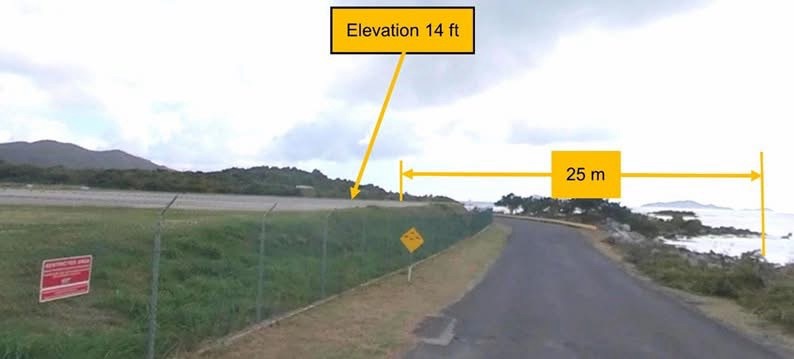
The commander’s statement indicated the approach became unstable at a late stage on f inals and he “applied power to arrest the descent.” The lack of information provided meant the investigation did not determine whether the commander’s application of power was an attempt to rescue an unstable approach or whether it was a low go-around during which the aircraft touched down before bouncing.
The airfield authorities classified the event as an incident and therefore only submitted their report to ASSI. A runway undershoot is one of the ‘typical examples’ of a serious incident listed in ICAO Annex 13 Attachment C, and so this was a reportable occurrence that should have been notified directly to the AAIB. Following an internal review, ASSI reclassified the event as a serious incident and appropriately referred it to the AAIB. While recognising that an undershoot had occurred, the commander did not submit an occurrence report, and the operator did not conduct an internal safety investigation. The lack of amplifying information hampered the investigation’s ability to gain a clearer understanding of how the event unfolded. Nonetheless, the commander’s brief statement, the operator’s maintenance report, CCTV footage, and evidence of the Rwy 07 undershoot infrastructure damage combined to support the conclusion that N915GD’s left mainwheel assembly struck the runway light on initial touchdown. While the perimeter fence was found broken, it could not be conclusively determined the damage resulted from contact with N915GD’s landing gear.
Based on the visual 3⋅5° angle described by the airfield’s PAPIs, the aircraft was approximately 80 ft below the expected approach path when it first touched down. Given the profile of the undershoot short of the paved runway surface, the aircraft would not have needed to be much lower on the approach for hull loss to have been a credible outcome
Conclusion:
This was a reportable serious incident resulting from an unstable approach in the vicinity of CB activity which had been forecast for N915GD’s arrival time at TUPJ. While the Met Office was unable to find definitive evidence of it affecting the airfield, turbulence and windshear could be expected near an active CB cell.
The initial severity assessment of incident, rather than serious incident, resulted in delayed notification to the AAIB. This delay, combined with a paucity of information about the circumstances and handling of the event made it difficult for the investigation to gain a detailed understanding of what transpired. It is unclear whether the commander attempted to rescue the unstable approach or whether his application of power was the initiation of an unsuccessful go-around.


